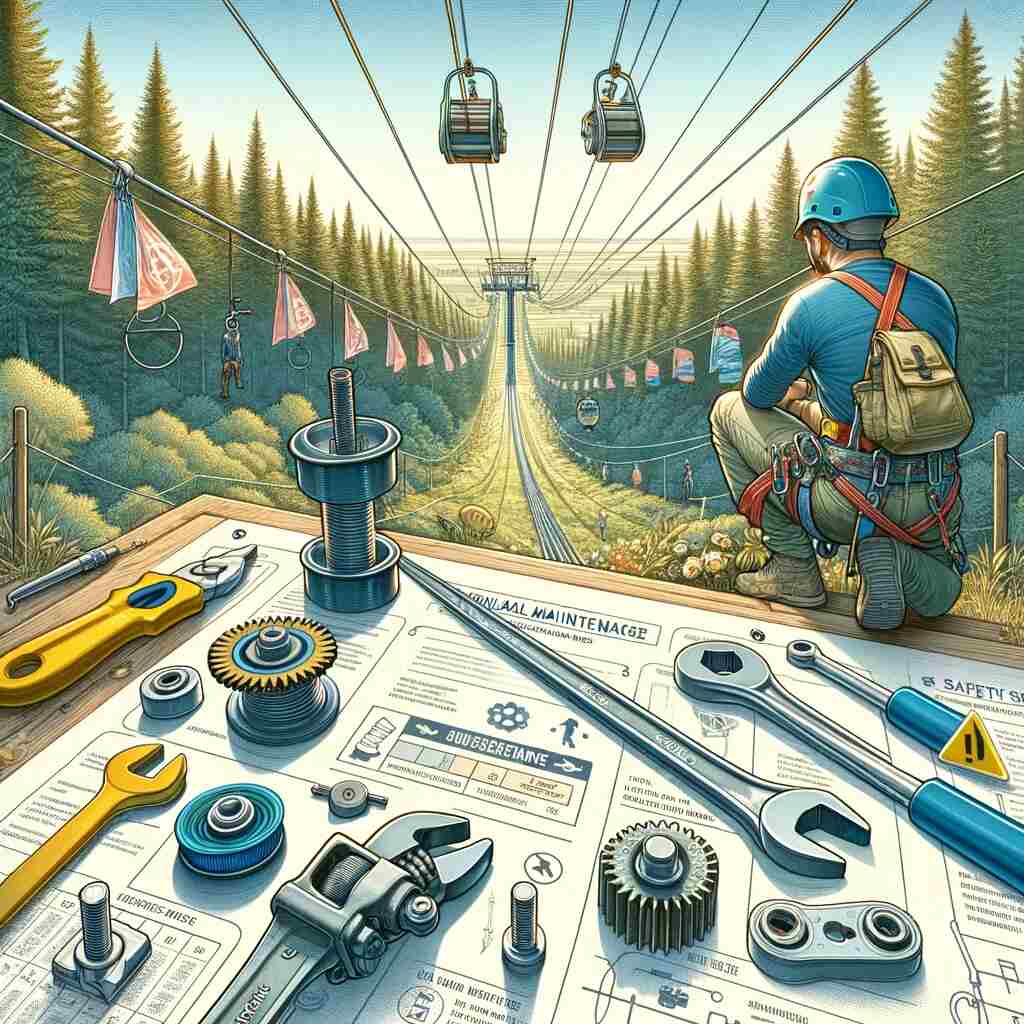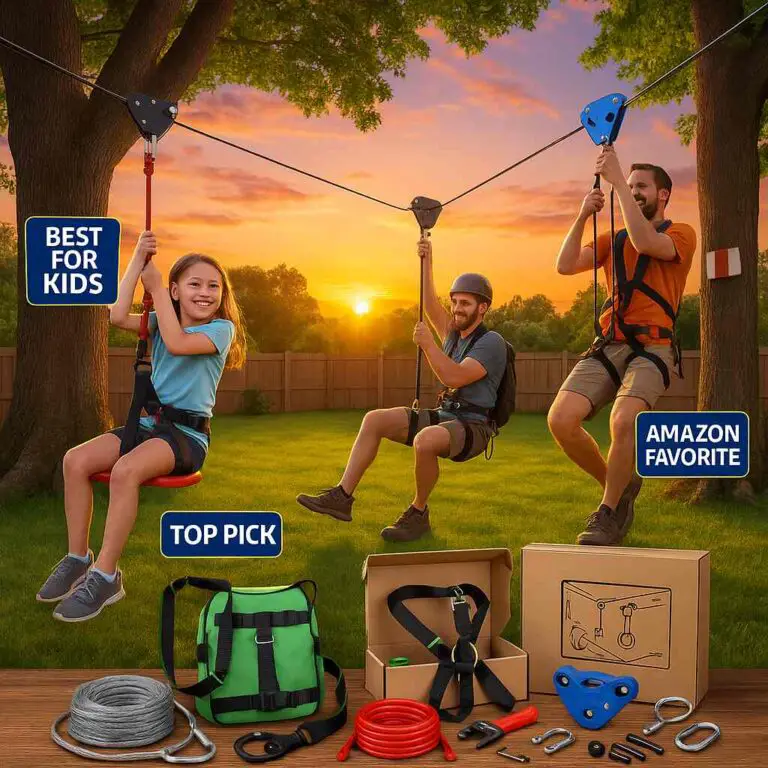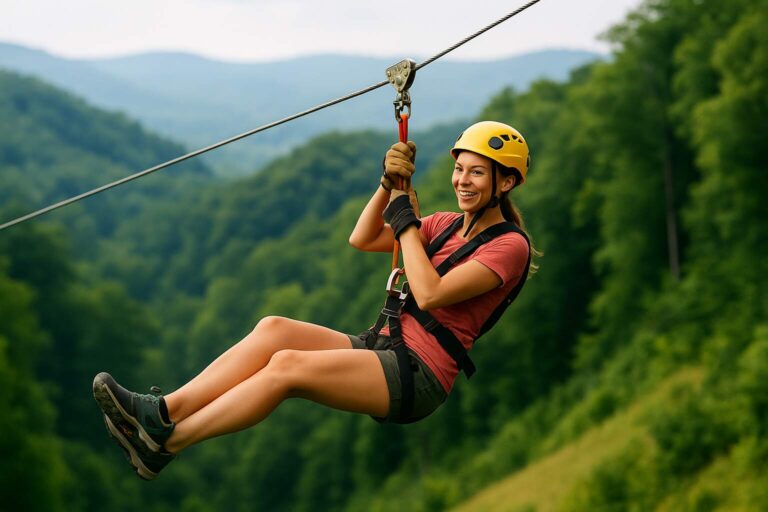Ziplining is a thrilling adventure that allows people to soar through the treetops, across canyons, and over breathtaking landscapes. However, ensuring the safety of ziplining enthusiasts is of utmost importance. Regular maintenance and inspections of ziplines are essential to prevent accidents and injuries.
In this comprehensive guide, we will delve into the critical aspects of maintaining and inspecting a zipline to ensure the highest levels of safety for participants and operators.
The Importance of Zipline Safety
Before delving into the maintenance and inspection procedures, it’s crucial to understand why zipline safety is paramount. Ziplining involves high speeds, heights, and inherent risks, making it essential to prioritize safety measures:
Preventing Accidents: Proper maintenance and inspections help identify potential issues and prevent accidents before they occur. This proactive approach saves lives and reduces injuries.
Legal Compliance: Compliance with safety standards and regulations is not only responsible but also essential for the continued operation of a zipline facility. Non-compliance can result in legal repercussions and the closure of the operation.
Reputation Management: Maintaining a strong safety record enhances a zipline facility’s reputation and attracts more customers. Word of mouth and positive reviews from satisfied participants can significantly impact business.
Pre-Maintenance Preparation
Before diving into the maintenance and inspection processes, it’s essential to gather the necessary tools and equipment and establish a proper plan:
Safety Equipment: Ensure that all personnel involved in maintenance and inspections have the necessary personal protective equipment (PPE), including helmets, harnesses, gloves, and safety glasses.
Inspection Schedule: Develop a comprehensive inspection schedule that outlines the frequency and scope of inspections. Regular inspections should be conducted, with more extensive annual inspections.
Documentation: Maintain detailed records of all maintenance and inspections. Accurate documentation helps track the history of the zipline system and provides evidence of compliance.
Routine Maintenance
Routine maintenance is essential to keep a zipline operating safely and efficiently. These tasks should be performed regularly, and any issues discovered should be addressed promptly:
Lubrication: Regularly lubricate all moving parts, such as pulleys, trolleys, and braking systems, to reduce friction and prevent wear and tear.
Cable Inspection: Examine the zipline cables for signs of damage, corrosion, or wear. Replace any damaged cables immediately to prevent accidents.
Trolley Maintenance: Check the condition of the trolleys, ensuring that they move smoothly along the cable. Replace worn or damaged trolleys as needed.
Brake System Inspection: Inspect the braking system to ensure it is functioning correctly. The brake should engage smoothly and provide adequate stopping power.
. Harness and Helmet Inspection: Examine participant harnesses and helmets for signs of wear and tear. Replace any damaged equipment to ensure participant safety.
Platform and Launch Area Maintenance: Keep the launch and landing platforms clean and free from obstacles. Regularly inspect wooden platforms for rot or structural issues.
Annual Comprehensive Inspection
In addition to routine maintenance, a comprehensive annual inspection is essential to assess the overall safety and functionality of the zipline system. This inspection should be carried out by a qualified professional:
Structural Inspection: Examine the entire zipline structure, including towers, cables, and platforms, for signs of structural damage or wear. Look for cracks, rust, or loose bolts.
Cable Inspection: Conduct a thorough inspection of the zipline cables. This should include non-destructive testing methods such as magnetic particle testing or ultrasonic testing to detect hidden flaws.
Brake System Evaluation: Test the braking system’s performance, ensuring it meets the required standards for stopping distance and reliability.
Harness and Equipment Inspection: Inspect all participant harnesses, helmets, and safety equipment to ensure they are in good condition and compliant with safety standards.
Inspection Report: After completing the annual inspection, generate a detailed inspection report that outlines the findings, any necessary repairs or replacements, and the timeline for addressing these issues.
Safety Procedures for Participants
Ensuring the safety of zipline participants goes beyond maintaining and inspecting equipment. It also involves implementing safety procedures that participants must follow:
Participant Briefing: Before participants embark on a ziplining adventure, provide them with a thorough safety briefing. This should include instructions on how to use the equipment, proper body positioning, and emergency procedures.
Weight Limits: Establish weight limits for participants to prevent overloading the zipline cables and equipment. Ensure participants are weighed before their adventure to determine eligibility.
Age and Health Restrictions: Set age and health restrictions to ensure that participants are physically capable of ziplining safely. Pregnant women, individuals with heart conditions, and those with recent surgeries should be restricted from participating.
Supervision: Ensure trained staff members are present to supervise participants throughout the ziplining experience. They should be prepared to assist in emergencies and enforce safety rules.
Emergency Procedures
In the event of an emergency, having well-defined procedures in place can be the difference between a minor incident and a major catastrophe. Establish and communicate these procedures to staff and participants:
Evacuation Plans: Develop evacuation plans for various scenarios, including equipment malfunctions, inclement weather, or participant injuries. These plans should specify how to safely remove participants from the zipline.
First Aid Stations: Set up first aid stations near the zipline area and ensure staff members are trained in basic first aid. Have a well-stocked first aid kit readily available.
Communication: Establish clear communication channels to quickly relay information to staff and participants in case of an emergency. Two-way radios or cell phones can be invaluable in these situations.
Emergency Response Training: Provide staff members with comprehensive training in emergency response procedures, including CPR and basic life support techniques.
Zipline Operator Training
Properly trained staff members are crucial to maintaining zipline safety. Ensure that all operators are well-versed in zipline operations, safety protocols, and emergency procedures:
Training Programs: Develop and implement training programs for zipline operators that cover equipment usage, participant management, safety measures, and emergency response.
Certification: Require operators to obtain relevant certifications, such as Zipline Guide Certification or First Aid and CPR Certification, to demonstrate their competence.
Ongoing Education: Keep operators up-to-date with the latest safety standards and industry best practices through ongoing training and education.
Public Awareness and Education
Educating the public about zipline safety is essential in preventing accidents. Implement strategies to raise awareness and ensure that potential participants are informed:
Informational Materials: Provide brochures, websites, and signage that highlight safety procedures, weight limits, and health restrictions.
Informed Consent: Require participants to sign informed consent forms before embarking on a ziplining adventure. These forms should outline the risks and safety rules.
Online Resources: Create an informative website or online portal where potential participants can access detailed safety information and frequently asked questions.
Post-Incident Analysis and Reporting
Despite all precautions, accidents can still occur. In such cases, it’s essential to conduct a thorough analysis and report the incident:
Incident Reporting: Establish a clear process for reporting accidents and incidents. Ensure that staff members know how to document and report any safety-related issues.
Root Cause Analysis: Conduct a root cause analysis to determine the underlying causes of the incident. This analysis can help prevent similar incidents in the future.
Corrective Actions: Implement corrective actions based on the findings of the incident analysis. This may include equipment upgrades, procedural changes, or additional staff training.
Conclusion
Maintaining and inspecting a zipline for safety is an ongoing commitment that requires diligence, attention to detail, and a dedication to providing participants with a thrilling yet secure experience. By prioritizing safety measures, adhering to industry standards, and regularly monitoring and maintaining equipment, zipline operators can ensure that their adventures remain exhilarating and injury-free.
Ziplining offers a unique opportunity for people to connect with nature and experience the world from a different perspective. By following the guidelines outlined in this comprehensive guide, zipline operators can continue to provide this extraordinary experience while upholding the highest standards of safety and professionalism.








